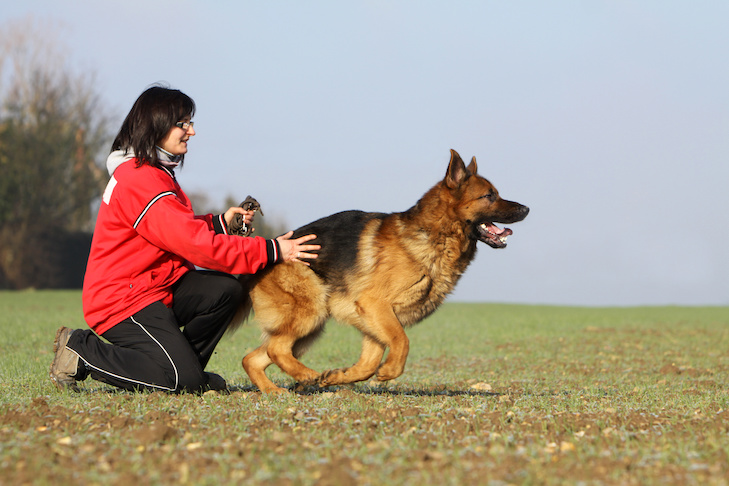
A walk is an essential part of the life of nearly every dog. Dogs often enjoy and require daily walks with their owners. If you have a puppy or older dog that refuses to walk with a leash it is frustrating.
When a dog won’t walk on a leash, pet owners can be thrown into a whirlwind of thoughts. List of reasons that a dog will not behave on a leash.
She’s A Puppy
Megan Stanley is the chair of the Association of Professional Dog Trainers’ board of directors and the owner of Dogma Training & Pet Services, located in Calgary, Alberta.
Stanley suggests that you take your time and gradually introduce leashes to a new dog or puppy.
It’s a good idea to let your dog investigate any new equipment. It’s important to smell it. It’s worth a sniff. Stanley says that he prefers to use a spray instead of just putting the paint on.
Introduce the collar slowly to your dog so that she becomes accustomed. Stanley recommends pairing dog products, such as dog collars and leashes, with treats.
Attach the leash once your dog feels secure and comfortable with his collar. Drag the leash behind your dog. As your dog moves with her leash, you should reward it to build positive associations. Begin at home and gradually move outside. Remember to always be patient.
Next, pick up your leash and let the puppy guide you (within reasonable limits!). You should only try to direct your puppy’s movements once she is confident wearing her leash, collar and harness and you are on the other side of the leash.
Stanley explains that people expect their dog to walk well and understand the leash immediately. Stanley says, “Once they get outside, there are many distractions.” It’s not just the smells. People are around. “There’s wildlife such as squirrels.”
If your dog stops walking after being asked to, reward them for moving forward. Most owners reward their dogs for stopping. This is counter-productive.
If you’re looking for dog treats to give your pet, choose a treat that is high in value and one they will love. Stanley recommends freeze-dried liver treats. You can also praise the person verbally for moving forward.
She is a shelter dog
It will take time for your dog to become accustomed to the leash if she is a mature adult and has not been used to it.
A mature dog is more difficult to train. You’ll have to re-learn their behavior. Your job is to re-teach them. All they do is learn behaviour. It’s your job to show them new things. Stanley says it will take a while.
Start slowly and reward your dog with positive reinforcement. Don’t quit.
The assistant professor and coordinator of clinical education at K-State University, Dr. Ryane Eglar DVM says, “Patience is the key.” She says that even though they may be an adult, they do not necessarily have experience or leash-related skills.
Is She Anxious, or Frightened?
They might find it scary to go out in the world. Stanley says, “They just need that confidence.” Start slowly to help your dog. Introduce your dog to the outside world, and assure her she is safe.
When your dog is scared by something, comfort her and engage with her. Don’t make a huge deal of things that aren’t real threats, such as a garbage vehicle. Stanley suggests that if your dog has a fear of garbage trucks, you should be proactive by avoiding walking him when the truck’s out.
Stanley says that most people need just a few moments to realize that they are not in any danger.
It’s sometimes best to stop if you dog won’t move. If you are getting frustrated it is best to stop and try again another day, says Dr. Englar.
Her advice is to be positive and gentle, using warm voices. To encourage your dog, you can also praise her or talk to her on a walk.
She is in pain
I’m more concerned about the dog who always walks well and then suddenly doesn’t. “That would concern me,” Dr. Englar says. It could be an indication of pain.
According to Dr. Englar, your dog may not want to walk because of an infection or illness. Other possible causes include undiagnosed diabetics, organ failure, or Lyme disease.
Book an appointment to see your vet if there are any concerns, or if a change in behavior is noticeable and does not resolve quickly.
Englar says that it is better to take precautions than regrets when you are uncomfortable about someone’s behavior.
What Dog Harnesses Can Do for You?
Stanley recommends using a harness for your dog if you have never trained them to walk with a leash. Stanley suggests trying out a harness for your dog, such as the Freedom No-Pull Dog Harness.
The harnesses also prevent the dogs’ necks from being strained. Stanley says that dog harnesses don’t “put any pressure on unnecessary areas on dogs, but still alleviate the pulling.”
If your dog is pulling, Dr. Englar recommends the PetSafe gentle leader quick release dog collar. She warns against the use of choke chains.
It’s time to hire a professional dog trainer if you have tried to teach your dog to walk with a leash but failed. Only trainers that use positive reinforcement will be able to help you. You can easily get your dog to enjoy walking calmly by your side while on leash.